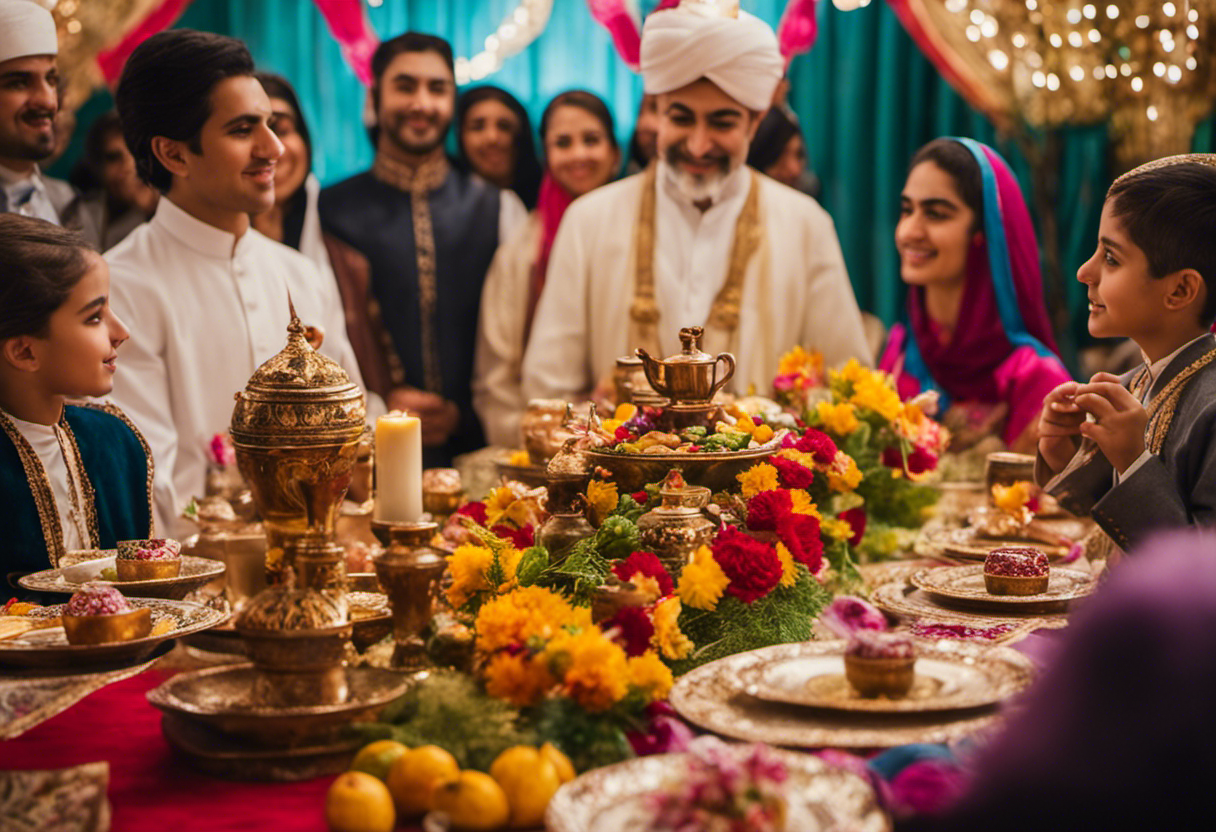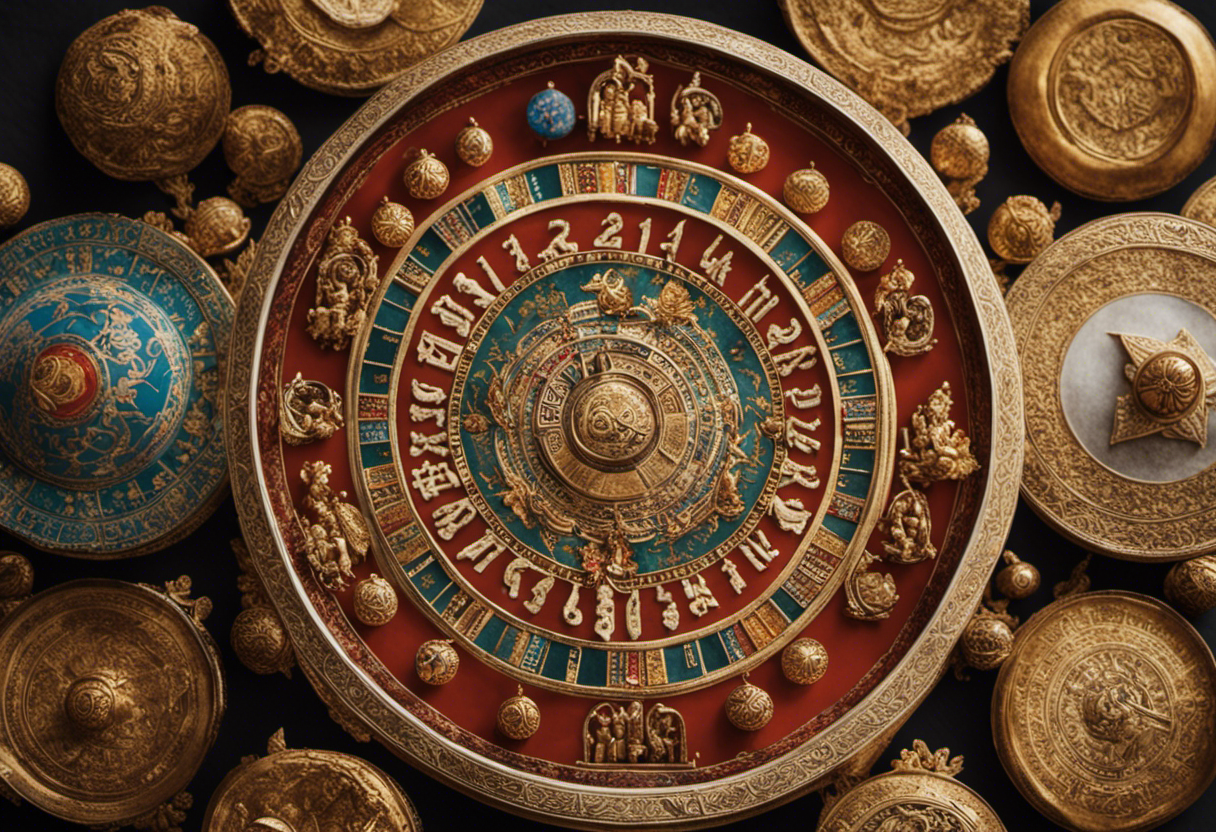Did you know that the Zoroastrian calendar, one of the oldest known calendars in the world, is still in use today?
With its rich history and cultural significance, the Zoroastrian calendar continues to shape religious festivals and observances for the Zoroastrian community.
However, in the modern era, the calendar faces challenges in adaptation and maintenance.
In this article, we will explore the origins, key features, and the role of the Zoroastrian calendar in the present day, shedding light on its continued relevance in the modern world.
Key Takeaways
- Accuracy of astronomical observations is a challenge in maintaining the Zoroastrian Calendar in the modern era.
- The use of astronomical software and algorithms has been adopted to calculate the positions of celestial bodies.
- Changing lifestyles and priorities of the Zoroastrian community pose challenges in adhering to the traditional calendar.
- Digital platforms and social media are being incorporated to disseminate information and provide reminders about the calendar.
The Origins and History of the Zoroastrian Calendar


The Zoroastrian calendar has its origins in the ancient religion of Zoroastrianism, which was founded by the prophet Zarathustra in ancient Persia around the 6th century BCE. The calendar has a long and complex history, with influences from various cultures and civilizations.
One of the key factors that contributed to the development of the Zoroastrian calendar was the need to organize religious festivals and rituals according to the solar year. The calendar was designed to align with the seasons and to mark important celestial events, such as solstices and equinoxes. This allowed the Zoroastrians to celebrate their religious festivals at the appropriate times.
Over time, the Zoroastrian calendar has evolved and undergone changes. It was influenced by the Babylonian calendar during the time of the Persian Empire and later by the Islamic calendar during the Islamic conquest of Persia. These influences resulted in modifications to the calendar system, such as the addition of leap years and adjustments to the length of months.
Today, the Zoroastrian calendar is primarily used by the Parsi community, who follow the religion in India and Iran. It continues to be an important aspect of their religious and cultural traditions, serving as a guide for their religious observances and festivals.
Key Features and Components of the Zoroastrian Calendar


There are several key features and components of the Zoroastrian calendar, including the division of the year into twelve months and the incorporation of leap years to adjust for the solar cycle.
The Zoroastrian calendar follows the solar year, which consists of 365 days and 5 hours, 48 minutes, and 45 seconds. To account for this discrepancy, a leap year is added approximately every four years, similar to the Gregorian calendar. This ensures that the calendar remains synchronized with the solar cycle.
One key feature of the Zoroastrian calendar is its association with the seasons. Each month is named after a specific natural element or phenomenon, such as ‘Frawardin,’ which means ‘the month of paradise.’ This reflects the close connection between the calendar and the natural world, as well as the religious significance of certain times of the year.
Another important component of the Zoroastrian calendar is the inclusion of religious festivals and observances. These are based on the ancient teachings of Zoroastrianism and are celebrated throughout the year. Some of the most significant festivals include Nowruz, the Persian New Year, and Mehregan, a celebration of the autumn equinox.
The Role of the Zoroastrian Calendar in Religious Festivals and Observances


The Zoroastrian calendar plays a crucial role in organizing and determining the timing of religious festivals and observances. It is deeply ingrained in the traditions and rituals of the Zoroastrian community, ensuring that important religious events are celebrated at the appropriate time. The calendar follows a solar system, consisting of twelve months and each month is divided into thirty days. The significance of the Zoroastrian calendar in religious festivals and observances is evident in the way it dictates the dates for these events.
One of the most prominent festivals in Zoroastrianism is Nowruz, which marks the beginning of the new year. It falls on the spring equinox, which is determined by the Zoroastrian calendar. This festival holds immense cultural and religious significance for Zoroastrians, as it represents the victory of light over darkness and the renewal of life. Similarly, other festivals such as Mehregan and Sadeh also follow the Zoroastrian calendar, ensuring that they are celebrated on specific dates each year.
The Zoroastrian calendar not only helps in organizing and scheduling religious festivals, but it also serves as a reminder of the importance of these events in the lives of Zoroastrians. It allows the community to come together and celebrate their faith, reinforcing their sense of identity and belonging. Therefore, the Zoroastrian calendar’s significance in Zoroastrian rituals, festivals, and traditions cannot be overstated.
Challenges and Adaptations: Maintaining the Zoroastrian Calendar in the Modern Era


One of the challenges in maintaining the Zoroastrian calendar in the modern era is ensuring the accuracy of astronomical observations. The Zoroastrian calendar is a solar calendar that relies on precise astronomical calculations to determine the dates of religious festivals and observances. However, with the advent of modern technology and the increasing urbanization of communities, the ability to make accurate astronomical observations has become more difficult.
In order to address this challenge, the Zoroastrian community has had to adapt and find alternative methods to determine the dates of religious events. One method that has been employed is the use of astronomical software and algorithms that can calculate the positions of celestial bodies with great precision. This allows for more accurate determination of the dates of festivals and observances.
Another challenge in maintaining the Zoroastrian calendar in the modern era is the changing lifestyles and priorities of the community. As society becomes more fast-paced and individuals have less time for religious observances, there is a need to find ways to ensure that the calendar remains relevant and accessible.
To address this challenge, the Zoroastrian community has started to incorporate digital platforms and social media to disseminate information about upcoming events and provide reminders to the community. This allows individuals to stay connected and engaged with their religious practices, even in the face of busy schedules and competing priorities.
Cultural Significance and Impact of the Zoroastrian Calendar Today


Despite the challenges faced in maintaining the accuracy of the Zoroastrian calendar in the modern era, its cultural significance and impact continue to be felt today.
The Zoroastrian calendar, known as the Shahenshahi calendar, plays a crucial role in the religious and cultural celebrations of the Zoroastrian community. It is a solar calendar that consists of twelve months and is based on the vernal equinox.
One of the most important cultural celebrations that relies heavily on the Zoroastrian calendar is the festival of Nowruz, which marks the Persian New Year. Nowruz is celebrated by millions of people worldwide and is recognized as a significant cultural event in countries such as Iran, Afghanistan, and Tajikistan. The Zoroastrian calendar ensures that the festival falls on the correct date, which is usually around March 21st.
Furthermore, the Zoroastrian calendar also raises global awareness about the ancient Zoroastrian religion and its rich cultural heritage. As the world becomes more interconnected, cultural diversity becomes increasingly important. By recognizing and celebrating the Zoroastrian calendar, people from different backgrounds can gain a deeper understanding of the beliefs and traditions of the Zoroastrian community.
Conclusion
In conclusion, the Zoroastrian calendar, with its rich history and intricate components, continues to play a significant role in religious festivals and observances.
Despite the challenges of adapting to the modern era, its cultural significance and impact remain strong.
Like the intricate gears of a clock, the Zoroastrian calendar keeps time for its followers, guiding them through the cycles of life and connecting them to their ancient traditions.



